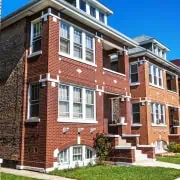1031 Exchanges Have Powerful Benefits
Completing a 1031 exchange, also known as a like-kind exchange, is a great way to defer paying capital gains taxes on the sale of your investment property.
We’ve had a number of friends and clients ask about 1031 exchanges and reverse 1031 exchanges.
So here’s a brief Q&A about 1031 exchanges:
- What is a 1031 exchange?
- What are the steps in a 1031 exchange?
- What is a reverse 1031 exchange?
- What are the steps in a reverse 1031 exchange?
- How much does a 1031 exchange cost?
- Can I convert my 1031 exchange property to my primary residence?
What is a 1031 exchange?
A 1031 exchange is an exchange of one investment property for another. It allows capital gains taxes to be deferred indefinitely and as such is extremely popular with real estate investors. The term gets its name from Section 1031 of the Internal Revenue Code.
As a US taxpayer, you can use a 1031 exchange to defer 100% of your capital gain tax liability when selling your investment property. To do this, you must reinvest all the proceeds from the sale of your investment property into a new “replacement property” of equal or greater value.
Note that your primary residence will not qualify for a 1031 exchange. However, if you own a single-family rental property, it can be exchanged for a commercial rental property.
What are the steps involved?
- First, seek advice from a well-established QI (Qualified Intermediary also called an Exchange Accommodator or Exchange Facilitator), a tax advisor and a real estate agent knowledgeable about 1031 exchanges. This team of professionals will be your valued resource helping you understand the various regulations and successfully navigating the process.
- Next, identify your desired property type, location and investment timeline. This will help guide your search for replacement property.
- Once you know your goals, open a qualified exchange account with your QI before closing on the property you’re selling. This will ensure that the sale proceeds are handled appropriately for the exchange.
- Be sure your sales contract includes language specifying this as a 1031 exchange. This triggers specific procedures for handling proceeds and adhering to timeframes.
- Follow standard closing procedures and transfer the sale proceeds to your exchange account.
- Then, within 45 days of closing on the sale, you need to formally identify potential replacement properties to your QI. You can identify up to three properties.
- Next, you have 180 days from the closing of the sale to complete the purchase of a replacement property.
- And finally, you follow standard closing procedures for purchasing your new replacement property with funds from your exchange account!
What is a reverse 1031 exchange?
A reverse 1031 exchange is also called a “forward exchange”. It allows you to buy a replacement property before you sell your existing property (also called relinquished property). As the name implies, a reverse 1031 exchange is essentially the opposite of a traditional 1031 exchange, where you sell first and then purchase.
What are the steps involved?
- First, you contract to purchase your new “replacement property”.
- Then sign a reverse exchange agreement with a Special Purpose Entity (SPE). The SPE is normally a newly established Limited Liability Company (LLC), created to accommodate the exchange by holding the title to your replacement property.
- Assign your replacement property to the SPE.
- You and/ or your lender then loans money to the SPE for the purchase of the replacement property.
- Through the reverse exchange agreement you signed, the SPE agrees to transfer the replacement property to you when the deal concludes.
- Next the SPE closes on replacement property and takes full ownership.
- You enter into a contract with a buyer for the sale of your old “relinquished property” and also enter a standard tax-deferred exchange agreement with the qualified intermediary (QI). The relinquished property sale then closes within the required 180 days of the closing of the replacement property.
- Then you direct the QI to disburse funds from the exchange account for the purchase of the replacement property from the SPE.
- The SPE takes the funds received and uses them to repay you and your lender for your acquisition financing (step 4).
- You then take ownership of the replacement property from the SPE!
How much does it cost?
In addition to fees paid to your real estate broker, a standard 1031 exchange typically costs between $750 and $1,250. The fee covers the 1031 exchange’s administrative and qualifying costs.
Due to the extra steps involved in a reverse 1031 exchange, it is considerably more expensive. So you’ll want to try to use the standard 1031 process if possible. Of course fees vary but you should expect to pay between $4,500 to $7,500 to complete a reverse exchange.
Can I convert my 1031 exchange property to my primary residence?
Yes. Say your intentions change and now you wish to convert your 1031 exchange beach house rental property into your primary residence. It is possible but to avoid tax complications you’ll need to carefully navigate IRS regulations. That said, here are the basics of how it works:
Rental requirement
The IRS will examine your intent when you convert any rental property to a primary residence. As such, it’s important to document that it was indeed your initial objective to rent out the property after you first acquired it. So it’s a good idea to keep rental agreements with tenants, copies of your advertising listings and financial records showing the rental income received.
To show genuine investment intent, the 1031 exchange property should be rented out during the two years before you move in and claim it as your primary residence.
Limited personal use
During the rental period, your personal use of the property needs to be limited to no more than 14 days of personal use in any 12-month period. Specifically, personal use cannot exceed 10% of the total days the property is rented out in any 12-month period.
Tips to avoid problems
- Document everything meticulously, including rental agreements, receipts, and proof of residency.
- Be aware of potential tax implications if you violate the rules or sell the property before the required holding periods.
- Remember, converting a 1031 exchange property to your primary residence requires careful planning and adherence to IRS regulations.
- Consult your tax professional and a Qualified Intermediary for guidance specific to your circumstances to ensure a smooth and tax-advantageous transition.
I hope you find this information helpful!
Please contact us for help with all your real estate needs.
This article was first published by our sister company Best Atlanta Properties.


 Best Chicago Properties, LLC
Best Chicago Properties, LLC
 Best Chicago Properties, LLC
Best Chicago Properties, LLC

 Best Chicago Properties
Best Chicago Properties


